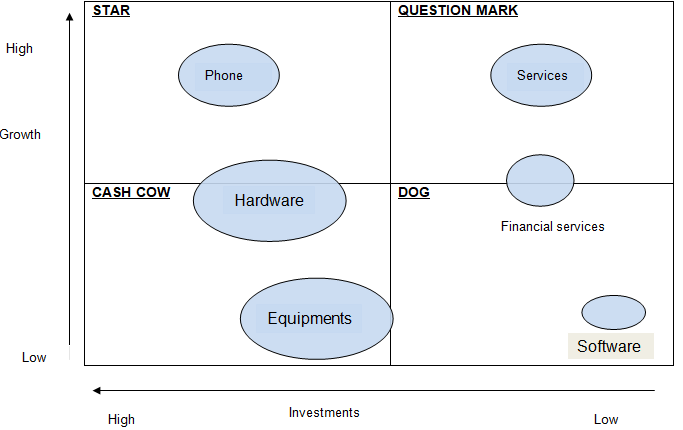Introduction
Diversification is the main strategy used by many corporations in a very competitive market. Many companies including Hewlett Packard (HP) participate in diversification of products and service. The main reasons for diversification are:
- Growth: the computer market is currently flooded and there is an intense competition. This has resulted in most company’s escaping the stagnating market in hope of capturing other better markets.
- Risk management strategy: companies diversify to reduce risks.
- Increased sales and profits: HP Company seeks to increase its market share and maximize on its profits.
- Economies of scale: diversification enables companies to enjoy economies of scale and this drives production costs down.
HP diversification strategy
To indentify HP diversification strategy, it is imperative to analyze the major products and services offered by the company. They include computer sale, mobile technology, recycling, energy efficiency and providing software solutions. Key HP segments and services also indicate the level of diversification. These are the following:
- HP
- HP software and solutions
- HP Pro-curve
- HP services
- Enterprise storage and service
- Personal system groups
- Printing and imaging
- Financial services section
Diversification strategies
At the corporate level, HP has global expansion strategy. The company expands regionally and internationally. This is referred to as the cross border strategy and it lowers production cost and increases sales worldwide. At a business level, the company has several diversifications.
Some of the diversifications are related to the product that HP specializes in and they are just seen as a growth in the same field. These products include manufacturer computer parts, storage devices and other HP services that are related to the computer industry.
HP has also diversified to other products that are not related to their core business. The company is currently diversifying to produce software products, offer financial services and solutions as well as investing in the production of mobile phones.
It must be noted that venturing new markets outside the company’s field of specialization is quite challenging as the company has to compete with experts in this field and the already established companies. For example, HP competes with IBM in terms of software development and with Nokia in the mobile phone technology. One strategy that HP uses is the acquisitions of companies already dealing with these products.
HP has in the recent past acquired companies dealing with hardware, software, services and those dealing with mobile devices. Some of the companies acquired are 3COM Computer Networking, EDS Information Technology Consulting, OPSWARE Inc, Compaq Personal Computers among others.
Impacts of diversification
HP diversification process has been beneficial to the company. The diversification process has increased the sales and profits margins of the company. The company develops one strong brand instead of having individual brands and hence diversification strengthens the HP brand.
HP BCG matrix
The Boston Consulting Group (BCG) matrix classifies products and services of a given business and enables the managers to determine which products should be given priority over the others. The BCG matrix has four sections representing; cash cow, dog, star and question mark.
The cash cow represents products with low growth but high market share, the star represents products with high growth and high market share, the dog shows products and services with low market share and low growth while the question mark represent products with high growth rate but low market share. The BCG matrix for HP is shown in figure 1 below.

Figure 1: The BCG matrix for HP Company